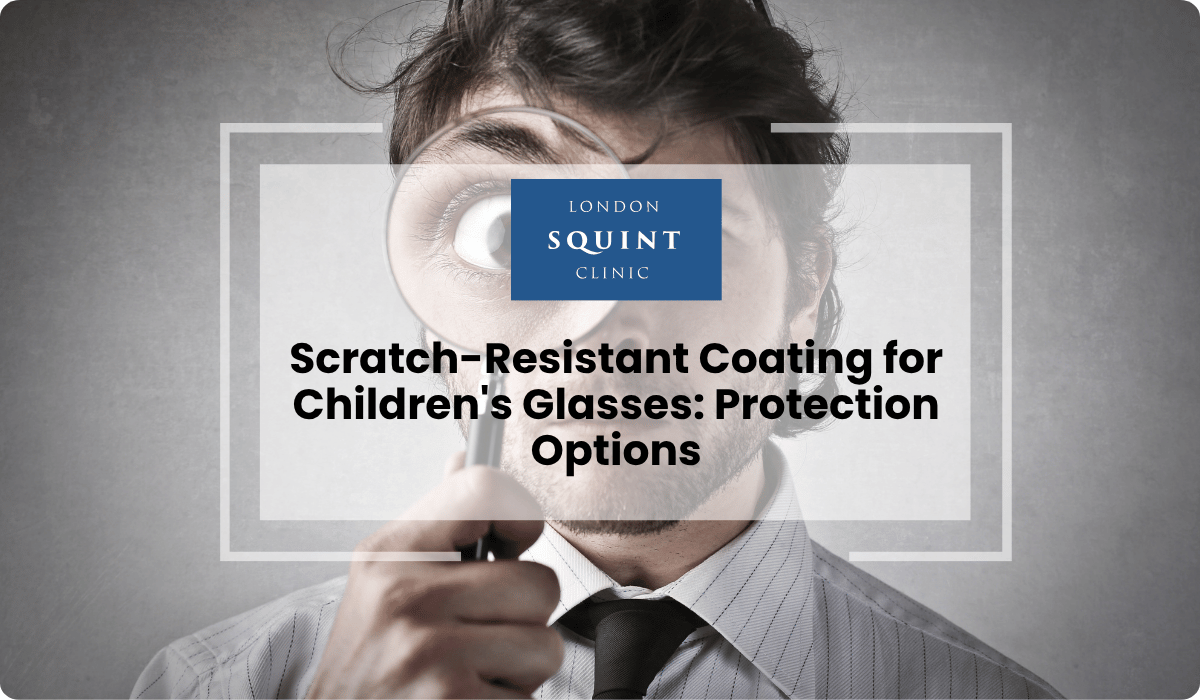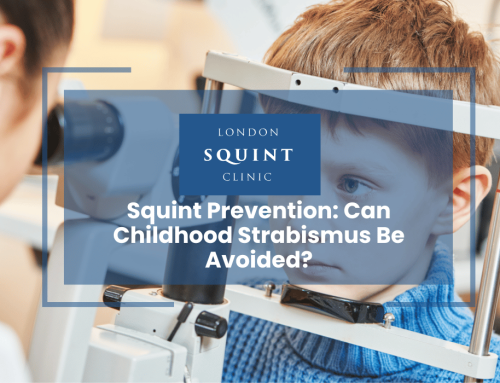Scratch-Resistant Coating for Children’s Glasses: Protection Options
Essential Insights for Protecting Your Child’s Vision
- Scratch-resistant coatings are essential for children’s eyewear, not optional, as they protect developing visual systems from disturbances caused by lens damage.
- Premium coatings (with Bayer ratings of 3-4+) offer 40-60% better protection than standard options and can maintain clarity for up to 24 months versus 6-12 months.
- While adding £30-£60 to initial costs, quality coatings reduce replacement frequency by 50-75%, potentially saving £200-£400 annually.
- Daily maintenance with microfibre cloths and proper storage in hard cases can double the effective lifespan of protective coatings.
- Central scratches causing visual disturbances require immediate attention, especially for children undergoing treatment for conditions like amblyopia or strabismus.
Table of Contents
- Why Scratch-Resistant Coating Is Essential for Children’s Eyewear
- Understanding Different Types of Protective Coatings for Kids’ Glasses
- How Do Scratch-Resistant Coatings Work to Protect Children’s Lenses?
- Comparing Durability: Standard vs. Premium Coating Options
- Are Scratch-Resistant Coatings Worth the Additional Cost?
- Practical Tips for Maintaining Coated Children’s Glasses
- When to Replace vs. Repair Scratched Children’s Eyewear
Why Scratch-Resistant Coating Is Essential for Children’s Eyewear
Children’s glasses endure significantly more wear and tear than adult eyewear, making scratch-resistant coating not merely an option but a necessity. Young children, particularly those under 10, often handle their glasses roughly—dropping them on playground surfaces, wiping lenses with inappropriate materials, or storing them unprotected in school bags. These everyday behaviours can quickly compromise vision clarity through accumulated scratches.
The impact of scratched lenses extends beyond mere aesthetics. Even minor scratches can create visual disturbances that interfere with a child’s developing visual system. For children with conditions like amblyopia (lazy eye) or strabismus (squint), maintaining optimal lens clarity is crucial for effective treatment. Scratched lenses can reduce visual acuity by creating light scatter and distortion, potentially undermining prescribed vision therapy.
Furthermore, children are less likely than adults to report gradual vision deterioration caused by scratched lenses. They may simply adapt to increasingly compromised vision, which can affect academic performance and visual development during critical growth periods. Scratch-resistant coating provides an essential protective barrier that helps maintain consistent visual clarity throughout the lifespan of the glasses, supporting proper visual development and treatment efficacy.
Understanding Different Types of Protective Coatings for Kids’ Glasses
When selecting protective coatings for children’s eyewear, parents should be familiar with several options that offer varying levels of protection and additional benefits. Standard scratch-resistant coating provides a basic level of protection against everyday wear. This factory-applied treatment creates a thin, hard film over the lens surface that resists minor abrasions from routine handling and cleaning.
Premium scratch-resistant coatings offer enhanced durability through advanced formulations. These higher-tier options typically incorporate silicone or other compounds that provide superior hardness while maintaining flexibility to prevent coating separation from the lens. For active children, these premium options may offer significantly longer lens clarity despite rough handling.
Anti-reflective (AR) coatings complement scratch resistance by reducing glare and improving vision clarity, particularly beneficial for children using digital devices for schoolwork. Many modern AR coatings include integrated scratch resistance, offering dual benefits. Hydrophobic coatings repel water, oils, and fingerprints, making lenses easier to clean—an important consideration for children who frequently touch their glasses.
UV-protective coatings block harmful ultraviolet rays, protecting developing eyes from potential damage. For comprehensive protection, many specialists recommend combining scratch-resistant technology with impact-resistant lens materials like polycarbonate, which is virtually shatterproof and provides built-in UV protection. This combination offers optimal protection for children’s active lifestyles while supporting proper visual development.
How Do Scratch-Resistant Coatings Work to Protect Children’s Lenses?
Scratch-resistant coatings function through sophisticated material science that creates a protective barrier between the lens surface and potential damaging elements. The coating consists of a thin layer of specially formulated compounds—typically silicone-based or made from other hard materials—that bonds molecularly to the lens surface during application. This creates a shield significantly harder than the underlying lens material.
The application process involves precision technology where the coating is applied in liquid form and then cured through heat treatment or UV exposure. This curing process creates cross-linking between molecules, forming a durable matrix that distributes impact forces across a wider area rather than allowing them to concentrate at a single point. For children’s eyewear, this means that when a fingernail or rough surface contacts the lens, the coating absorbs and disperses the pressure that would otherwise create a scratch.
Modern scratch-resistant technology also incorporates flexibility within hardness—a crucial balance for children’s glasses. While the coating must be hard enough to resist abrasion, it also needs sufficient elasticity to prevent cracking or peeling when the lens flexes during normal use or temperature changes. This elasticity is particularly important for children who may subject their glasses to sudden temperature variations, such as moving from air-conditioned classrooms to hot playgrounds.
It’s important to note that while these coatings significantly improve scratch resistance, they don’t create scratch-proof lenses. The technology provides a protective buffer that withstands everyday handling but can still be compromised by severe impacts or exposure to abrasive materials. Understanding this limitation helps parents set realistic expectations while still appreciating the substantial protection these coatings provide for their children’s visual clarity.
Comparing Durability: Standard vs. Premium Coating Options
When evaluating scratch-resistant coatings for children’s glasses, understanding the durability differences between standard and premium options becomes crucial for making informed decisions. Standard scratch-resistant coatings typically offer a hardness rating of 1-2 on the Bayer scale (an industry measurement for coating hardness), providing basic protection against everyday handling. These coatings may show signs of wear after 6-12 months of typical childhood use, particularly for active children or those who are less careful with their eyewear.
Premium scratch-resistant coatings, by comparison, often achieve Bayer ratings of 3-4 or higher, representing significantly enhanced durability. These advanced formulations can maintain clarity for 18-24 months or longer under similar conditions. The superior performance stems from more sophisticated chemical compositions and application techniques that create denser molecular bonds and more uniform coverage across the lens surface.
Laboratory testing demonstrates meaningful differences in performance. When subjected to standardised abrasion tests (typically involving wool cloth with silicon carbide or similar abrasives), premium coatings show 40-60% less surface damage than standard options. This translates to real-world benefits where premium-coated lenses maintain better visual clarity over time despite exposure to playground sand, classroom materials, and improper cleaning attempts.
Another critical durability factor is coating adhesion—how well the protective layer bonds to the underlying lens material. Premium coatings typically employ advanced bonding technologies that reduce the risk of coating separation or peeling, a common failure point in standard coatings. For children who frequently transition between different environments (air-conditioned rooms to outdoor heat) or who may flex their frames during active play, this improved adhesion provides significant longevity advantages that justify the higher initial investment. Choosing the right glasses for your child involves considering these durability factors alongside prescription needs.
Are Scratch-Resistant Coatings Worth the Additional Cost?
When evaluating the cost-effectiveness of scratch-resistant coatings for children’s eyewear, parents must consider both immediate expenses and long-term financial implications. Premium scratch-resistant coatings typically add £30-£60 to the initial purchase price of children’s glasses, representing a 15-25% increase over uncoated lenses. This upfront cost can seem significant, particularly for families managing multiple expenses related to children’s healthcare.
However, the financial analysis becomes more favourable when considering replacement frequency. Children with uncoated lenses often require new glasses every 6-8 months due to vision-impairing scratches, even when the prescription remains stable. In contrast, properly coated lenses can maintain clarity for 12-24 months, effectively reducing the annual replacement rate by 50-75%. For a child requiring glasses throughout their developmental years, this reduction in replacement frequency can translate to savings of £200-£400 annually.
Beyond direct financial considerations, scratch-resistant coatings offer significant non-monetary benefits. Maintaining consistent visual clarity supports better academic performance and proper visual development. For children undergoing treatment for conditions like amblyopia or strabismus, uninterrupted clear vision is essential for treatment efficacy. The potential developmental and educational benefits of consistently clear vision make scratch-resistant coatings a prudent investment in a child’s overall well-being.
From a practical perspective, scratch-resistant coatings also reduce the administrative burden on parents. Fewer replacements mean fewer appointments, less time away from school or work, and reduced paperwork for insurance claims or healthcare reimbursements. When all factors are considered—direct costs, replacement frequency, developmental benefits, and convenience—scratch-resistant coatings represent a cost-effective choice for most families, particularly for active children or those requiring continuous visual correction for developmental conditions.
Practical Tips for Maintaining Coated Children’s Glasses
Proper maintenance significantly extends the lifespan of scratch-resistant coatings on children’s glasses. Establish a daily cleaning routine using appropriate materials—microfibre cloths specifically designed for optical lenses are ideal. These specialised cloths remove dust and oils without abrading the coating. Avoid paper towels, tissues, or clothing, which can contain wood fibres or rough particles that compromise even premium coatings over time.
For more thorough cleaning, use a lens-specific cleaning solution or mild soap with lukewarm water. Spray the solution onto the microfibre cloth rather than directly onto lenses to prevent liquid from seeping into the frame edges and potentially loosening the coating. Gently wipe in circular motions, avoiding excessive pressure. Rinse thoroughly with clean water if using soap, then dry with a fresh microfibre cloth. Never clean lenses when dry, as this can drag particles across the surface, creating microscopic scratches.
Proper storage plays a crucial role in coating preservation. Teach children to use a hard case with a soft interior lining whenever glasses aren’t being worn. For younger children, consider attaching the case to their school bag with a carabiner clip to reduce the likelihood of misplacement. Establish designated “glasses spots” at home—specific locations where glasses should be placed when removed, always with lenses facing upward to minimise contact with surfaces.
Regular maintenance checks help identify potential issues before they affect vision. Examine lenses weekly under good lighting, looking for early signs of coating wear or small scratches. Teach children to handle their glasses by the frames rather than touching the lenses, and discourage placing glasses lens-down on any surface. For very young children, consider glasses straps that keep eyewear secure during active play, reducing drop frequency and associated impact damage. These simple but consistent maintenance practices can double the effective lifespan of scratch-resistant coatings.
When to Replace vs. Repair Scratched Children’s Eyewear
Determining whether to replace or repair scratched children’s glasses requires careful assessment of several factors. Minor surface scratches that don’t interfere with vision may not warrant immediate action, particularly if they’re limited to peripheral areas of the lens. However, central scratches that create visual disturbances—such as glare, halos around lights, or reduced contrast sensitivity—typically necessitate intervention, especially for children with developing visual systems or those undergoing treatment for conditions like amblyopia.
The location and depth of scratches significantly influence the decision-making process. Superficial scratches affecting only the coating layer might be addressed through professional buffing or polishing by an experienced optician. This approach is most successful with isolated scratches on premium coatings that haven’t penetrated to the underlying lens material. However, this repair method removes a portion of the protective coating, potentially leaving the area more vulnerable to future damage.
For deeper scratches that have penetrated the lens material itself, replacement is generally the only effective solution. Similarly, lenses with multiple scratches distributed across the viewing area typically require replacement rather than repair, as the cumulative visual impact can affect a child’s visual development and academic performance. The age of the glasses also factors into the decision—if the frames are nearing the end of their typical lifespan (12-18 months for most children) or if a prescription check is due within 2-3 months, replacement often proves more practical than repair.
When considering replacement, timing should align with the child’s visual needs. For children actively undergoing treatment for strabismus or amblyopia, maintaining optimal visual clarity is crucial for treatment efficacy, justifying more frequent replacements. Conversely, for older children with stable vision and less active lifestyles, minor scratches might be tolerated longer. Ultimately, the decision should balance visual needs, treatment requirements, and practical considerations, with priority given to maintaining the clear, consistent vision necessary for proper visual development during childhood.
Frequently Asked Questions
How long do scratch-resistant coatings typically last on children’s glasses?
Standard scratch-resistant coatings typically last 6-12 months on children’s glasses with regular use, while premium coatings can maintain effectiveness for 18-24 months or longer. Durability depends on the coating quality, proper maintenance, and the child’s activity level. Regular cleaning with appropriate materials and proper storage in a hard case significantly extends coating lifespan.
Can scratched lenses affect my child’s visual development?
Yes, scratched lenses can negatively impact a child’s visual development. Scratches create light scatter and distortion that reduce visual acuity and clarity. For children with conditions like amblyopia (lazy eye) or strabismus (squint), scratched lenses can compromise treatment effectiveness. Children often don’t report gradual vision deterioration, potentially affecting their academic performance and visual development during critical growth periods.
Are premium scratch-resistant coatings worth the extra cost for children’s glasses?
Premium scratch-resistant coatings are typically worth the additional £30-£60 investment for children’s glasses. While they increase initial costs by 15-25%, they reduce replacement frequency by 50-75%, potentially saving £200-£400 annually. Beyond financial benefits, premium coatings maintain consistent visual clarity essential for proper visual development and academic performance, making them particularly valuable for active children or those with vision conditions requiring treatment.
What’s the best way to clean scratch-resistant coated glasses for children?
The best cleaning method for scratch-resistant coated glasses involves using a microfibre cloth specifically designed for optical lenses with lens-specific cleaning solution or mild soap and lukewarm water. Spray solution onto the cloth rather than directly on lenses, wipe gently in circular motions, rinse thoroughly if using soap, and dry with a clean microfibre cloth. Never clean dry lenses or use paper towels, tissues, or clothing, which can damage the coating.
Can scratched lenses be repaired or must they be replaced?
Minor superficial scratches affecting only the coating layer might be addressed through professional buffing by an experienced optician, particularly on premium coatings. However, deeper scratches that penetrate the lens material or multiple scratches across the viewing area typically require complete lens replacement. The decision should consider scratch location, depth, visual impact, the child’s specific visual needs, and whether they’re undergoing treatment for conditions like strabismus or amblyopia.
Do scratch-resistant coatings make lenses completely scratch-proof?
No, scratch-resistant coatings do not make lenses completely scratch-proof. These coatings provide a protective barrier that significantly improves resistance to everyday abrasions but can still be damaged by severe impacts, exposure to abrasive materials, or improper cleaning. The technology offers substantial protection that extends lens clarity and lifespan, but proper handling and maintenance remain essential for maximizing coating effectiveness.
Find out if you are suitable for Double Vision Treatment
Not everyone is eligible for double vision surgery.
Find out if you could benefit from this life-changing surgery by taking the quick self-suitability quiz below:
Our most popular procedures

Hello, I’m Nadeem Ali
I’m one of the few eye surgeons in the world with 100% focus on Squint and Double Vision Surgery.
I have 24 years of eye surgery experience, and worked for 13 years as a Consultant at London’s renowned Moorfields Eye Hospital.
In 2023, I left the NHS to focus fully on treating patients from across the world at the London Squint Clinic. You can read more about me here.
There’s lots of information on the website about: squint surgery, double vision surgery and our pricing.
The most rewarding part of my job is hearing patients tell me how squint or double vision surgery has changed their lives. You can hear these stories here.
Mr Nadeem Ali
MA MB BChir MRCOphth FRCSEd(Ophth)





